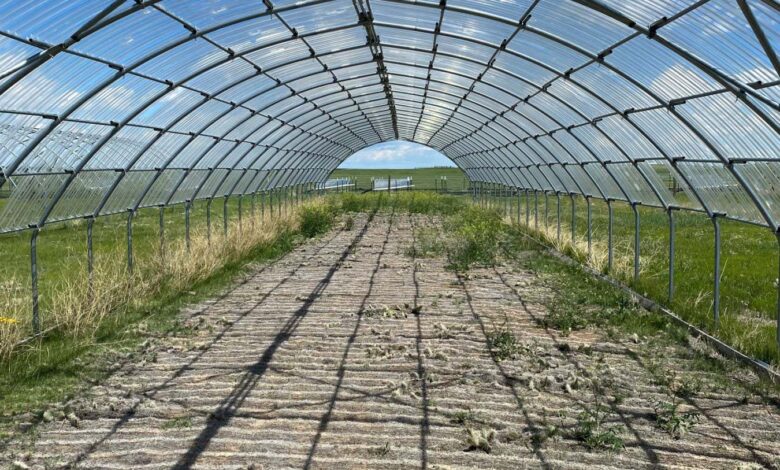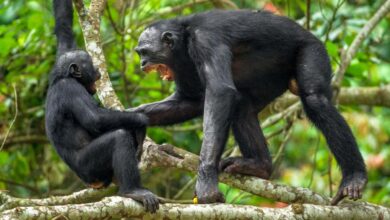
[ad_1]

One of the shelters used to mimic extreme drought, this one at the Central Plains Experimental Range, Colorado
Melinda Smith
Grassland productivity drops by a larger amount than we had thought during extreme drought, according to experiments at 100 sites around the world. The finding suggests plants may struggle to cope with the more frequent and severe droughts that climate change is expected to bring.
Melinda Smith at Colorado State University and her colleagues designed a shelter that can be placed over a piece of land, and topped with strips of plastic to divert some of the rain away from the vegetation below.
Working with other researchers around the world, Smith and her team were able to install such shelters at 100 grass or shrubland sites across six continents.
For each site, the team aimed to mimic what would be considered an extreme drought for the area – the type that would be seen once in every hundred years, says Smith. For example, a rainier site in Europe would have more plastic strips on the roof, compared with a drier site, to better simulate a drought.
After a year, the team found some of the experiments were successful at replicating drought conditions, and some less so due to higher-than-average rainfall in certain regions.
The 44 sites that experienced extreme drought saw plant growth reduced by 38 per cent for grasslands and 21 per cent for shrublands. “It was large,” says Smith, adding that the reductions in plant growth were significantly more severe than the researchers had observed in past studies.
They also found that more arid sites with less biodiversity are particularly vulnerable to drought. “The dry sites are already on the edge,” says Smith. ”They don’t have much of a buffer in their system to cope.”
Smith hopes that these insights can improve global climate models, which, up until now, have been underestimating the role of droughts in the carbon cycle.
Topics:
Source link




